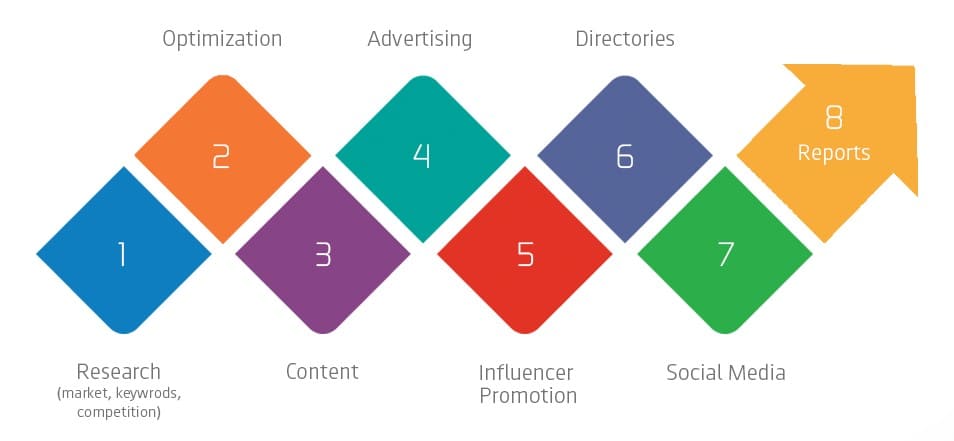The Power of Consistent Branding

When you maintain a consistent brand across all platforms, you do far more than just create a recognizable logo or catchy slogan. Every element—your menu design, tone of voice in social posts, website colors, and even the vibe of your dining room—communicates your restaurant’s personality and promises to guests. Think about how instantly you recognize the golden arches of McDonald’s, or the inviting script of Starbucks, no matter where you are. That’s the impact of consistency.
Here’s how sticking to a unified message and look can benefit you:
- Builds Trust: When guests see your messaging and visuals lined up everywhere, from your front door to your Facebook page, they’ll sense reliability and professionalism.
- Amplifies Word-of-Mouth: If your staff, customers, and followers all see the same story, they’ll have an easier time sharing it authentically with friends.
- Supports All Marketing: Whether you’re launching a new seasonal dish or a late-night happy hour, your core colors and tone keep promotions feeling familiar and engaging.
- Sets You Apart: Consistency helps you stand out in a crowded space by reinforcing exactly what makes your place unique.
So, be intentional. Use your logo, colors, and messages wherever your brand appears—menus, social media, signage, and ads. A cohesive presence makes it easier for guests to remember you—and choose you over the competition.
Defining and Communicating Your Restaurant’s Brand
Your restaurant’s brand is much more than a menu or a catchy name. It’s the full experience you offer every guest, shaped by several interconnected elements [as I explained further in the article entitled “Restaurant Planning Trends: How to Build a Cohesive Brand for Your Restaurant].
- Core Concept and Mission: What makes your spot unique? Whether it’s a cozy neighborhood pub or a lively sushi bar with a mission for sustainability, your core concept and mission statement set the tone for everything you do.
- Service Standards: Friendly service, speedy delivery, memorable hospitality—your standards should reflect what you want guests to rave about.
- Menu Choices: Seasonal specials, family recipes, or locally-sourced ingredients say as much about your brand as your decor.
- Visual Signature: From your logo to the colors on your walls and your menu font, every visual detail reinforces how guests perceive your restaurant.
- Active Engagement: Community involvement, special events, and social media activity all contribute to your reputation.
The secret is consistency. Use the same logo, language, and style across your website, Instagram, flyers, and even your takeout bags. Align your marketing—online or offline—with the spirit and personality of your concept. This way, no matter where customers find you, they’ll instantly recognize what makes you stand out.
Share Behind-the-Scenes Stories
Opening your kitchen doors—at least virtually—is a clever way to connect with your customers and make your brand feel more approachable. People love getting a sneak peek at what goes on beyond the dining room, whether it’s the chef whipping up a new dish, the team prepping for a busy night, or amusing mishaps during the lunch rush. These authentic glimpses help build trust and foster loyalty, as guests start to feel invested in the people and processes behind their favorite meals.
You don’t need to reveal every secret recipe or detail, but sharing candid moments and day-to-day operations can:
- Humanize your team, turning staff into local celebrities.
- Demonstrate the care and effort that goes into each plate.
- Spark conversation and interaction on your social channels.
By sharing these stories, you’re not just selling dishes—you’re cultivating a community around your restaurant.
Why Steady Growth Beats Quick Fixes
While it might be tempting to jump into aggressive discounting or run daily deals just to get people in the door, these approaches often come at a steep cost—literally. Heavy discounts can devalue your menu, attract bargain-hunters who are less likely to become loyal regulars, and ultimately erode your profits. Instead, focusing on building your business gradually gives you time to cultivate a loyal customer base, maintain healthy margins, and improve your reputation at a natural pace.
Sustainable growth means you’re not relying on short-term gimmicks, but leveraging your strengths—great food, memorable service, and authentic marketing—to keep your restaurant thriving for years to come.
Use Incentives Wisely
Every restaurant loves a full house, but constantly slashing prices is a surefire way to train diners to expect discounts and, over time, erode your brand’s perceived value. Instead, incentives should be used strategically to add value rather than diminish what you offer.
Consider these best practices to ensure your promotions work for you, not against you:
- Focus on Value-Added Incentives: Rather than offering heavy discounts across the board, think about complimentary extras that delight guests—a free appetizer for a special occasion, perhaps, or a dessert on birthdays. These gestures feel thoughtful and exclusive rather than budget-driven.
- Bundle Menu Items: Create combination deals that showcase your menu’s strengths. Bundling an entrée, side, and drink at a modest savings introduces guests to more of your cuisine while keeping margins intact.
- Leverage Specialty Days: Incentives are most effective when they feel timely. Use holidays like Mother’s Day or local events to offer unique promotions—think a complimentary entrée for moms or a themed prix fixe menu during a citywide festival.
- Rotate, Don’t Repeat: Keep things interesting. Avoid training your customers to expect the same discount every week. Vary your promotions in type and timing to retain an element of surprise and create ongoing engagement.
- Choose the Right Channel: Announce your incentives on the channels your customers use most, whether that’s Instagram, SMS, or your email newsletter. Make your loyal following feel in-the-know with early access or insider exclusives.
One clever tactic: buy-one-get-one-free deals. They’re often underused but can be incredibly effective, especially for solo diners looking for a reason to bring a friend—or to treat themselves to leftovers. Above all, keep your offers aligned with your brand identity, so that each incentive feels like an extension of your hospitality, not a fire sale.
Identify Your Target Audience and Set Clear Marketing Goals
Before you start shouting your restaurant’s name from the rooftops (or on every billboard in town), take a breath and get strategic. You need to know exactly who you want to walk through your doors. Is your ideal patron a group of friends looking for affordable happy hour bites, families craving comfort food, or business professionals in search of a sleek lunch spot?
By clearly defining your target audience, you’ll avoid wasting precious time and an even more precious budget on promotions that miss the mark. Think about the age, lifestyle, and dining preferences of your dream guests. Create a profile in your mind—or better yet, jot it down. This will guide not only the tone of your promotions but also where you share them, whether it’s flyers at the local gym or mouthwatering posts on social media.
Once you know whom you’re speaking to, it’s time to get specific about your goals. Do you want to draw a bustling Sunday brunch crowd, fill tables on weeknights, or launch a new menu item with a bang? Setting clear, achievable objectives will help you focus your marketing efforts and track your success along the way.
Pro tip: Platforms like Facebook and Instagram let you target your ideal customers with laser precision—so you can put your deals right in front of the people most likely to become loyal regulars. Don’t be afraid to sweeten the pot with special offers tailored to your chosen audience. With a little planning, you’ll be speaking directly to those most likely to love what you serve.
Leverage Local Events
Participating in or hosting local events is a fantastic way to introduce your restaurant to new faces in the community. Whether you’re sponsoring a neighborhood festival, organizing a charity dinner, or setting up a food booth at the local farmer’s market, these activities give you the chance to showcase your best dishes and personality. More importantly, they create genuine interactions with potential customers who may have otherwise walked right past your doors.
By connecting with people outside your immediate customer base, you bring energy and visibility to your restaurant. Plus, your involvement in community happenings demonstrates that your establishment is invested in the local scene—a trait diners appreciate and remember. Don’t overlook the power of partnering with other local businesses or of featuring special-event-only menu items to keep things fresh and engaging.
Know Your Audience: The Power of Customer Personas
Before jumping into marketing, it’s vital to understand exactly who you want to reach. Crafting a clear picture of your ideal customer—your customer persona—can save you countless hours and dollars down the line. Instead of casting a wide net and hoping for the best, you can focus your efforts where they matter most.
- Sharpened Messaging: Tailoring your promotions, menu highlights, and even décor to your target audience makes your messaging more relevant and engaging. Whether you’re wooing adventurous millennials or families seeking a kid-friendly meal, you’ll speak their language.
- Efficient Marketing Spend: With personas in mind, you can spend smarter—not harder. Instead of spreading your budget thin on every platform, you can zero in on channels (like Instagram for foodies or Facebook for locals) that actually reach your ideal guests.
- Menu and Experience Alignment: Knowing your typical customer can help guide everything from your daily specials to your live music nights. If your demographic loves craft beer and trivia, you’ll know just how to lure them in midweek.
Defining and targeting these customer personas makes your marketing strategies more focused, more cost-effective, and a whole lot more likely to deliver those all-important repeat visits.
Stay Ahead by Tracking Your Online Reputation
Keeping a close watch on what people are saying about your restaurant online is essential for maintaining a stellar reputation. Set up Google Alerts for your restaurant’s name, popular menu items, or even your chef, so you’re immediately notified when your business gets a mention across the web. You can also use tools like Hootsuite, eClincher, and or Mention to track conversations happening on social media and review platforms.
Being proactive about monitoring your online presence lets you catch negative feedback before it snowballs, respond promptly to both praise and criticism, and seize new marketing opportunities as they arise. Remember, sometimes even good press can bring in a rush of guests—make sure you’re prepared to turn that spike into lasting success.
Offer Smart Incentives: Bundle Up for Value
When it comes to encouraging diners to visit—and return—restaurants often turn to incentives. But before you start slashing prices, think strategically. Deep discounts on the whole menu can sometimes send the wrong message, making your offerings seem less valuable. Instead, consider creative ways to add value that excite your customers without undermining your food’s worth.
One effective approach is bundling menu items. By grouping popular dishes together—say, an appetizer, entrée, and dessert—for a set price, you provide a sense of value while showcasing the variety your kitchen delivers. Bundles are particularly attractive for special days: think a “Family Night Out” meal deal or a prix fixe Mother’s Day menu. These offers encourage guests to try something new, increase the average check size, and make your restaurant top of mind for group celebrations.
Bundling doesn’t just fill seats; it highlights your restaurant’s best features and fits seamlessly into a thoughtful marketing plan. By carefully curating combinations, you appeal directly to your target audience and drive buzz about your brand.
Optimize Your Website for Search (SEO)

Having a beautiful website is a must, but making sure people can actually find it is even more important. Search Engine Optimization (SEO) is what allows your restaurant to show up when hungry diners type “best pizza near me” or “cozy cafes in [Your City]” into Google. The better your SEO, the more likely it is that new guests will discover you before your competitors.
So, how do you make SEO work for your restaurant?
- Use Relevant Keywords: Sprinkle terms throughout your site that people might use to find restaurants like yours—think “family-friendly brunch,” “vegan options,” or “rooftop dining in Downtown.” Be natural, but don’t ignore those phrases!
- Claim Your Google Business Profile: Fill out your Google profile with accurate hours, location details, and rich photos. Updated and verified listings help you appear on map searches and local “near me” results.
- Make It Mobile-Friendly: Ensure your website looks great and loads quickly on phones. Diners searching on the go will click away fast if your page won’t load.
- Include Directions and Contact Info: People want quick answers—don’t make them hunt. Prominently list your phone number, address, hours, and even a clickable map.
- Encourage Online Reviews: Reviews on Google, Yelp, and TripAdvisor often appear high in search results. Respond warmly to both positive and negative feedback to show you care about your guests.
- Submit your restaurant information to the prime 70 directories. Being listed in directories generates authoritative backlinks to your website, which, in turn, helps your SEO. It also makes you visible to people who use those directories. You can sign up for free here, then when you’re ready, add Local SEO and the Listing Sync. Complete the information, and it will automatically sync that information to 70+ directories. There is also additional tools, including an expanded citation builder, AI ChatBot, and more.
By investing a little time into SEO, you’ll help locals and visitors alike find your restaurant online. It’s your digital storefront—make sure it’s easy to spot! If you wish to engage in SEO in-house, there are tools to help guide you.
Launch Your Online Hub
A modern, well-designed website is the foundation of any successful restaurant marketing plan. Think of it as your digital front door—open 24/7 to curious diners seeking their next great meal. Without a functional website, your restaurant might as well be invisible to a huge portion of potential customers who start their search online.
Your website serves as a central resource where guests can easily find your menu, hours, location, and even mouthwatering photos that spark cravings; they can also make reservations, view reviews, and access all your social media channels. While Instagram and Yelp are wonderful for sharing snapshots and gathering reviews, they can’t provide the complete story or the up-to-date details your website offers at a glance.
Much like your phone number or street address, your website should be featured everywhere—on business cards, flyers, delivery apps, and even your napkins. The easier you make it for people to discover you online, the more likely they are to visit in person.
What to Include on Your Restaurant Website
Your restaurant’s website should serve as a one-stop resource for potential guests seeking key details before making a reservation. Be sure to provide:
- Menu: Clearly display your current menu, including seasonal specials, prices, and dietary options (gluten-free, vegan, etc.).
- Hours and Location: List your address, business hours, and any special holiday closures. An embedded map can be a big help.
- Contact Information: Make it easy for guests to call, email, or book a table online. Links to delivery partners like Uber Eats or DoorDash are also helpful.
- Photos: High-quality images of your dishes, interior space, and any outdoor seating can help guests picture themselves enjoying a meal.
- About Section: Briefly share your story, cuisine style, and what makes your restaurant unique.
- Reservation page: You can embed third-party forms, such as OpenTable, or use a contact form that sends to your email to manage manually.
- Social Media Links: Guide visitors to your Instagram and Facebook pages for the latest updates and specials.
- Accessibility and Parking Info: Let guests know about parking options, wheelchair accessibility, and family-friendly amenities.
A well-organized website with these essentials will answer your guests’ most pressing questions and nudge them closer to making a reservation or stopping by in person.
Setting Your Marketing Budget
When it comes to deciding how to split your marketing dollars, the modern restaurant typically finds the most impact by heavily favoring digital channels. A commonly recommended approach is to dedicate around 80% of your marketing budget to online strategies—think social media, targeted ads, search engine marketing, and a polished website. The remaining 20% can then go toward traditional media, such as print ads in local papers, radio jingles, or a well-placed billboard near the local stadium.
And here’s a little secret to maximizing every dollar: always include your website in any print or radio material you create. This not only boosts your online presence but helps these traditional efforts pull double duty, guiding more potential diners right to your digital doorstep.
Experiment with Cinemagraphs
If you’re looking for a way to stand out from the endless scroll of static images on social media, cinemagraphs are worth a try. Think of a cinemagraph as a cross between a photograph and a video: it appears to be a still image, but with a single, subtle element in motion—like steam rising from a cup of coffee or a flickering candle beside a dinner plate. This gentle movement draws the eye and instantly makes your content more captivating.
Restaurants can use cinemagraphs to make menu items pop, showcase the ambiance of your bar, or even add a sense of energy to otherwise quiet scenes. Posting these on platforms like Instagram or Facebook can intrigue potential guests, signaling that your establishment is modern, creative, and ready to deliver a memorable experience. Experiment by highlighting bestsellers or special promotions—just a splash of animation can turn browsers into curious diners.
Consider Offering Delivery
In today’s on-demand world, offering delivery isn’t just a convenient option for your customers—it’s also a smart marketing move. Delivery extends your reach well beyond your restaurant’s walls, introducing your food to new neighborhoods and audiences who might otherwise never discover your venue.
A branded delivery service—whether you use your own vehicles adorned with your restaurant’s logo or partner with services like DoorDash or Uber Eats—transforms each delivery into a rolling advertisement. Every trip puts your name out in the community, keeps your brand top-of-mind, and can spark curiosity among potential customers.
Of course, logistics matter. To make delivery work for you, consider:
- Ensuring food travels well and maintains quality on arrival
- Packaging that displays your branding clearly
- Streamlining your menu to focus on items that deliver best
- Investing in reliable delivery staff or trusted partners
Done right, delivery opens up a new revenue stream while quietly promoting your business in the places your customers live, work, and play.
Make the Most of Signage and In-House Promotion
Strategic use of signage—both inside and outside your restaurant—can be a game-changer in drawing in new guests and encouraging return visits. Start by ensuring that your exterior signs are eye-catching and easy to read from afar; a bright, well-designed sign not only helps people locate your business but also gives a preview of your brand’s personality.
Inside your restaurant, get creative with menu boards, tabletop displays, and even branded takeout containers. Every element a customer sees is a chance to highlight daily specials, upcoming events, or unique offerings. Consider placing a copy of your menu near the entrance or in the window—potential customers passing by will be more inclined to step inside when they spot something that whets their appetite.
Pro tip: Always make extra menus available for guests to take home. When a menu finds its way onto someone’s fridge, it becomes a reminder to order with you the next time hunger strikes. And don’t forget your staff—train your servers to mention featured items or promotions, giving guests yet another reason to return. With all these strategies working together, your signage and in-house materials become silent salespeople working around the clock.
How to Promote Your Restaurant
Building a prominent and respectable business is not easy, and it won’t happen overnight. The following restaurant marketing tactics should help you get started on the right track. However, these are summary tips. If you’re serious about promoting your business, you should educate yourself on the full scope of marketing, and then develop a marketing plan that includes goals a well as the strategies and tactics to achieve them; then set up metrics to monitor and adjust tactics accordingly.

To follow is a short list of tips to Promote Your Restaurant
Create a Signature Brand Experience
Before you even begin promoting your restaurant, make sure you’re offering something memorable and unique. Think about what sets your venue apart, whether it’s a signature dish, a distinct atmosphere, or a compelling backstory. Share your story with your guests and make it part of your everyday customer experience—people remember what’s authentic.
Get on Instagram
As a restaurant, Instagram should undoubtedly be one of your first social media setups; it’s the undisputed No. 1 in the food and catering industry. Primarily a visual network, Instagram is invaluable to restaurants, food bloggers, and other individuals or businesses in the industry. After all, a picture of food is truly worth a thousand words. Instagram is also great for drawing attention to special promotions, promoting team-building — unleashing evangelists to promote on your behalf —, and providing information on limited-term offers.
Boost Your Online Presence
Don’t stop at Instagram. Make sure your website is up-to-date and mobile-friendly, and build out your presence on platforms like Facebook, Google My Business, and Yelp. These platforms are often where hungry customers make their decisions. A professional digital footprint signals credibility and draws in new guests before they ever step through your door.
Start Building Your Mailing List Early
Tips for promoting your restaurant or bar have to include email marketing. It is still one of the cheapest and most effective forms of digital marketing. However, a poorly executed campaign with low-quality content will do nothing but harm your business. Building up an opt-in mailing list takes time, so it’s a good idea to start building it up as soon as possible, even if it’s still a few weeks before your venue is ready to open. Once your venue is open for business, you’ll want to start engaging people with content that is no different than this article, offering free information. If you’re a sports bar, you don’t need to only tell your clientele about your specials, but engage them with things that interest them. Talk about sports, an upcoming game, a post-game analysis, or a survey about a team or sport. If you run a French bistro, engage them with interesting tidbits about French culture, travel, or history. Be creative, link it to the core theme of your venue so that the content is relevant.
Those who take the trouble to sign up will be among your most promising customers. However, you should avoid emailing too often. Only send out newsletters once a month, and/or mails when you want people to take a specific action — like a two day special, for example.
Engage and Interact with Your Audience
Successful marketing goes beyond simply sending out messages; it’s about fostering a two-way conversation. Make a habit of interacting with your customers both online and offline. Respond to their concerns, complaints, and even praise—this shows you’re attentive and care about their experience. Encourage your patrons to write reviews, post photos of your dishes, and share their experiences on platforms like Instagram, Yelp, or TripAdvisor. You can even invite them to participate in fun activities: host special events, run contests, or organize scavenger hunts to get your community excited and talking about your venue.
Show off your behind-the-scenes action. Share photos or short videos of your team preparing dishes, sourcing local ingredients, or plating up a signature meal. This transparency isn’t just entertaining—it builds trust and makes your brand more relatable.
The more you engage, the more likely your customers are to become loyal advocates for your restaurant. Combine thoughtful email marketing with genuine, ongoing interaction, and you’ll set your bar or restaurant up for long-term success.
Engage with Local Influencers and Professional Food Bloggers
You’ll need exponential word of mouth to thrive in digital marketing and online viability. To achieve that, you need to reach out to the top influencers in your area. For example, anyone who runs a popular food blog that deals with venues in your area might be considered a leading influencer. Also, research food platforms like Yelp and Zomato; contact the most active and most followed reviewers. If you have a genuinely great product and service, these influencers can and will promote your business in the most valuable way possible. To boost your chances of getting a great review from someone whose opinions people trust, consider inviting them for a free meal, and have the owner and chef meet them personally.
Claim Your Spots in Local Directories
Don’t stop at food bloggers—make sure your restaurant is easy to find everywhere hungry diners look. Claim your listings in local directories and on popular restaurant review sites like Yelp, Google Maps, and Foursquare. Join your local chamber of commerce and business organizations to get your name out there. A little networking never hurt anyone—send out press releases to local newspapers, magazines, schools, and even nearby manufacturing facilities to announce your grand opening or new menu. Consolidate 70+ directories into a single dashboard so you can make updates in one place and have them sync across the network.
Get Your Menu Online and Mobile-Friendly
Today’s diners want convenience. Make your menu available online, either through your own website or a trusted third-party provider. People love browsing and ordering food from their smartphones, so your menu should be easy to find and even easier to use. Ensure your online ordering platform is safe, simple, and popular—don’t make customers jump through digital hoops just to get a table or a takeout order.
Tip: Customers make reservations and place orders from their smartphones, so they need to be able to find your restaurant and menu online. Make it effortless for them! Ask us how.
Offer Smart Incentives and Promotions
Discounts, bundles, and creative incentives—when used wisely—can help attract new guests without devaluing your brand. Rather than relying on daily deal specials that slash your prices, consider limited-time offers or bundled menu experiences that showcase your best items. Make your specials exciting enough to draw attention, but sustainable for your bottom line.
Collaborate and Connect
Don’t be afraid to join forces with other local businesses, professional organizations, or even nearby event spaces. Co-hosting events or cross-promoting with complementary businesses (like wineries, breweries, or nearby theaters) can expose your venue to entirely new audiences.
Tell Your Story—Everywhere
Finally, remember that people are drawn to stories, not just menus. Reveal what makes your restaurant different—share your origins, your philosophy, and your passion for food. Incorporate your story into your website, your social media, and your in-person interactions. This emotional connection can turn first-time guests into lifelong fans.
Need help? Book a free consultation
Categories
Recent Posts
About us and this blog
We are a digital marketing company with a focus on helping our customers achieve great results across several key areas.
Request a free quote
We offer professional SEO services that help websites increase their organic search score drastically in order to compete for the highest rankings even when it comes to highly competitive keywords.
| | Thank you for Signing Up |


More from our blog
See all postsRecent Posts
- 7 Visual Tactics to Win Customers in Crowded Markets September 27, 2025
- How Small Businesses Can Create Content That Answers Common Questions July 28, 2025
- Why Local Brick-and-Mortar Businesses Must Have a Digital Front Door June 26, 2025









